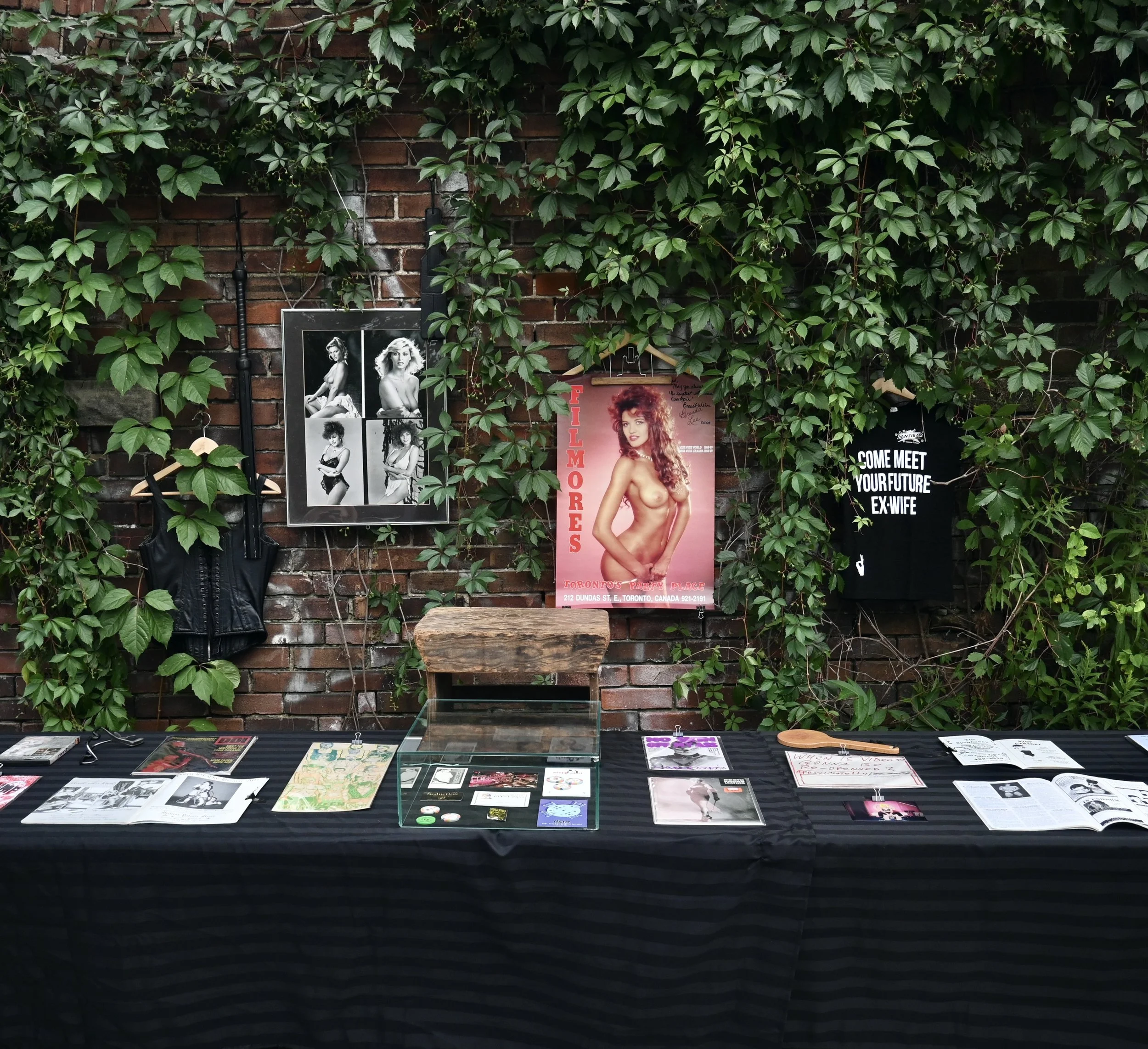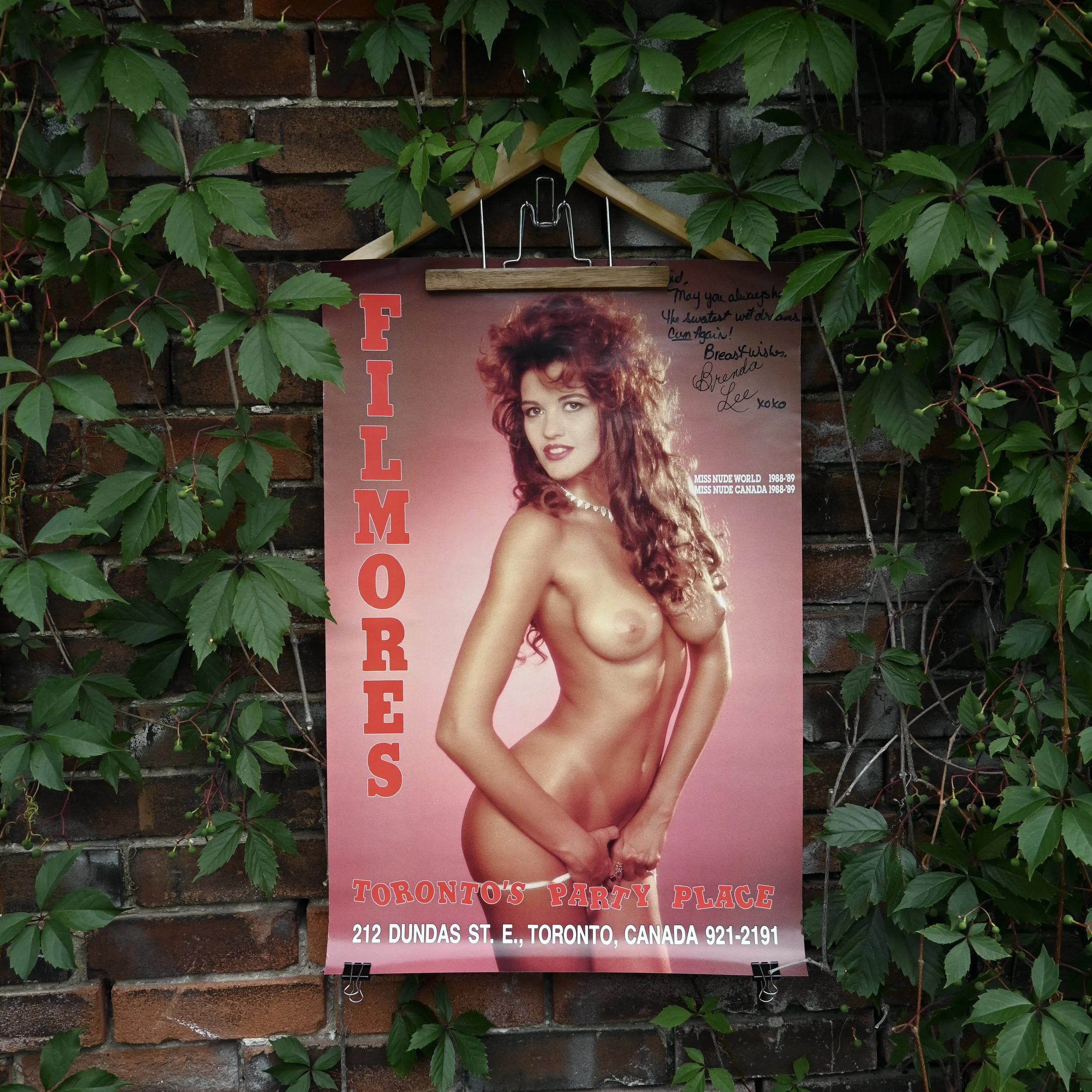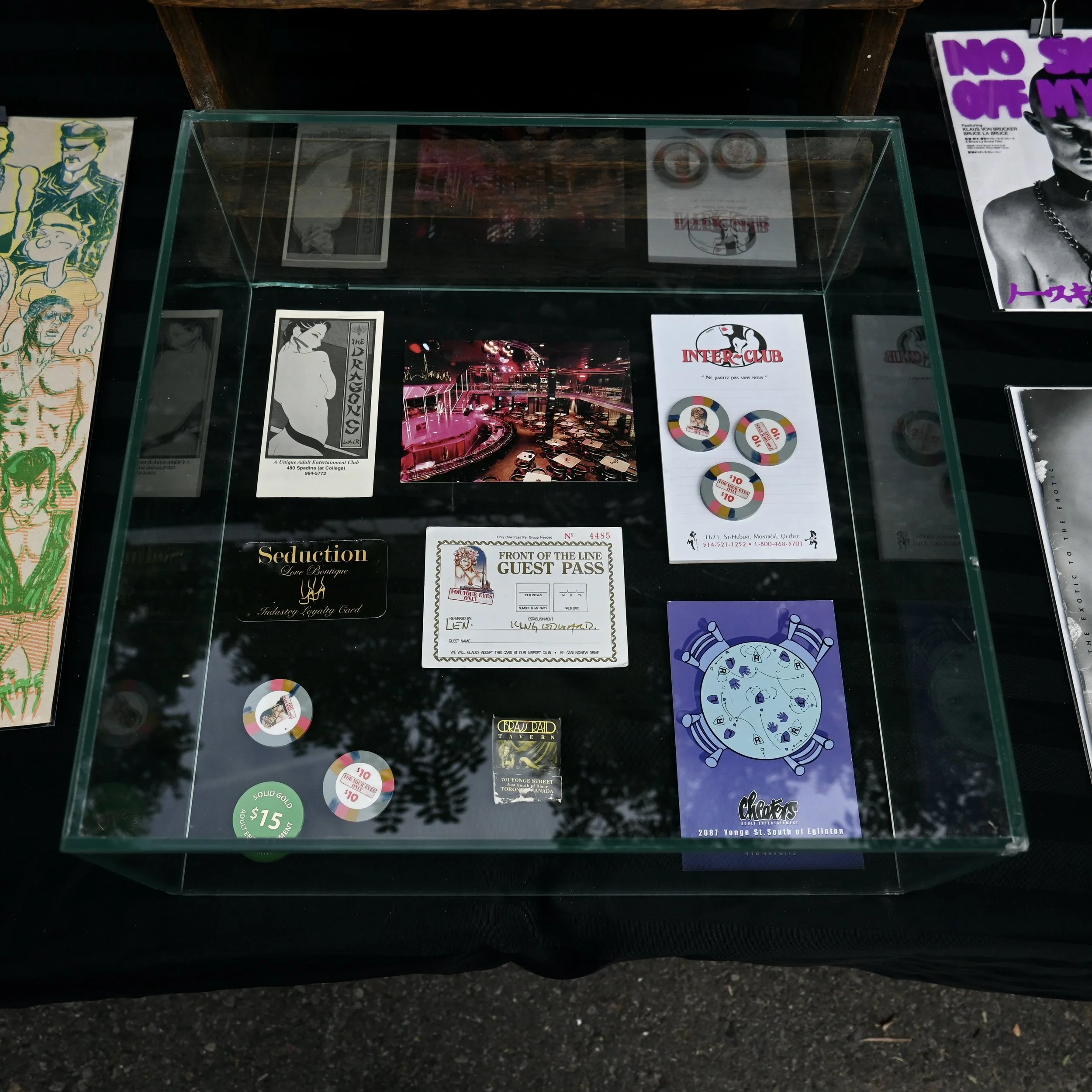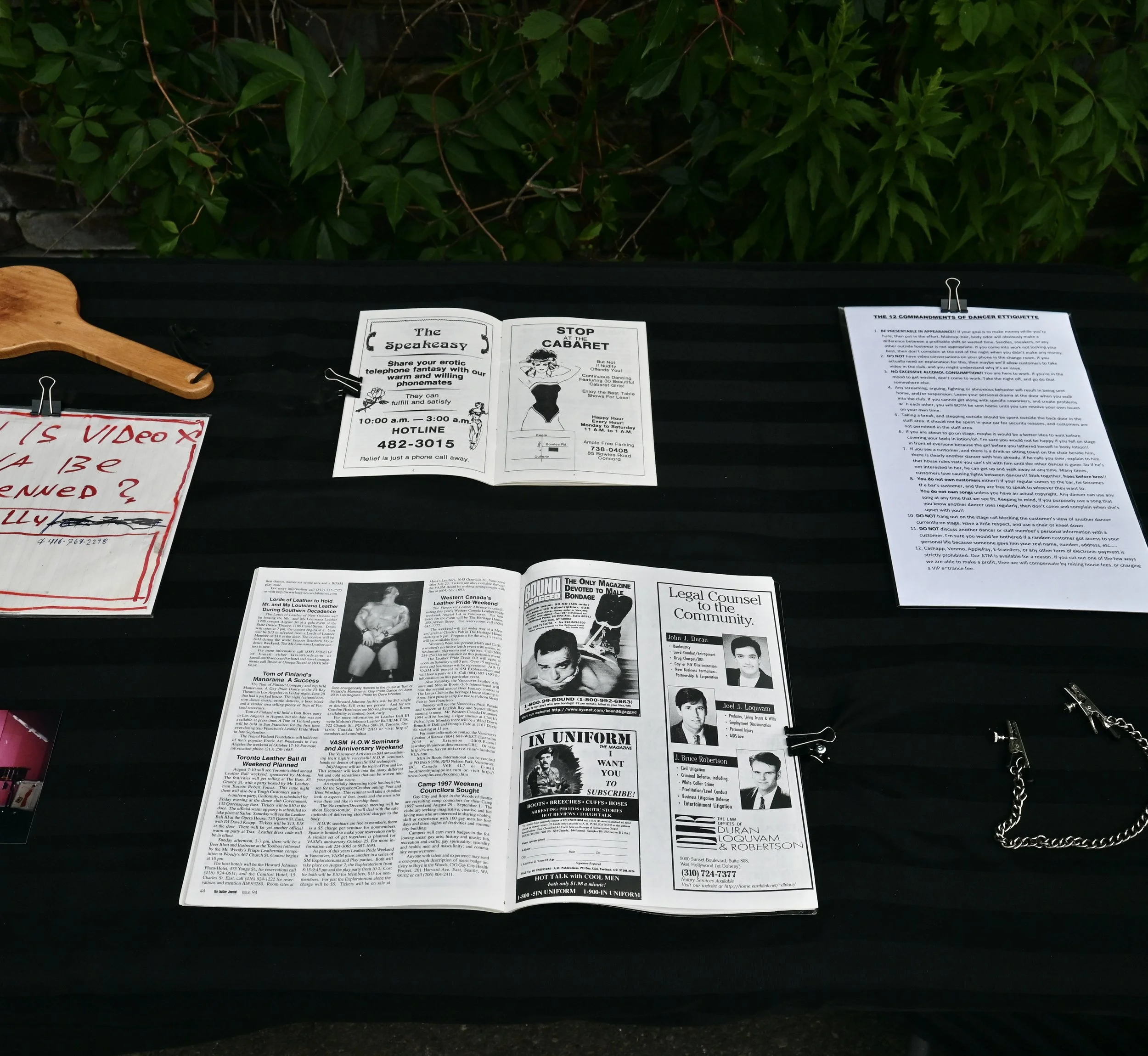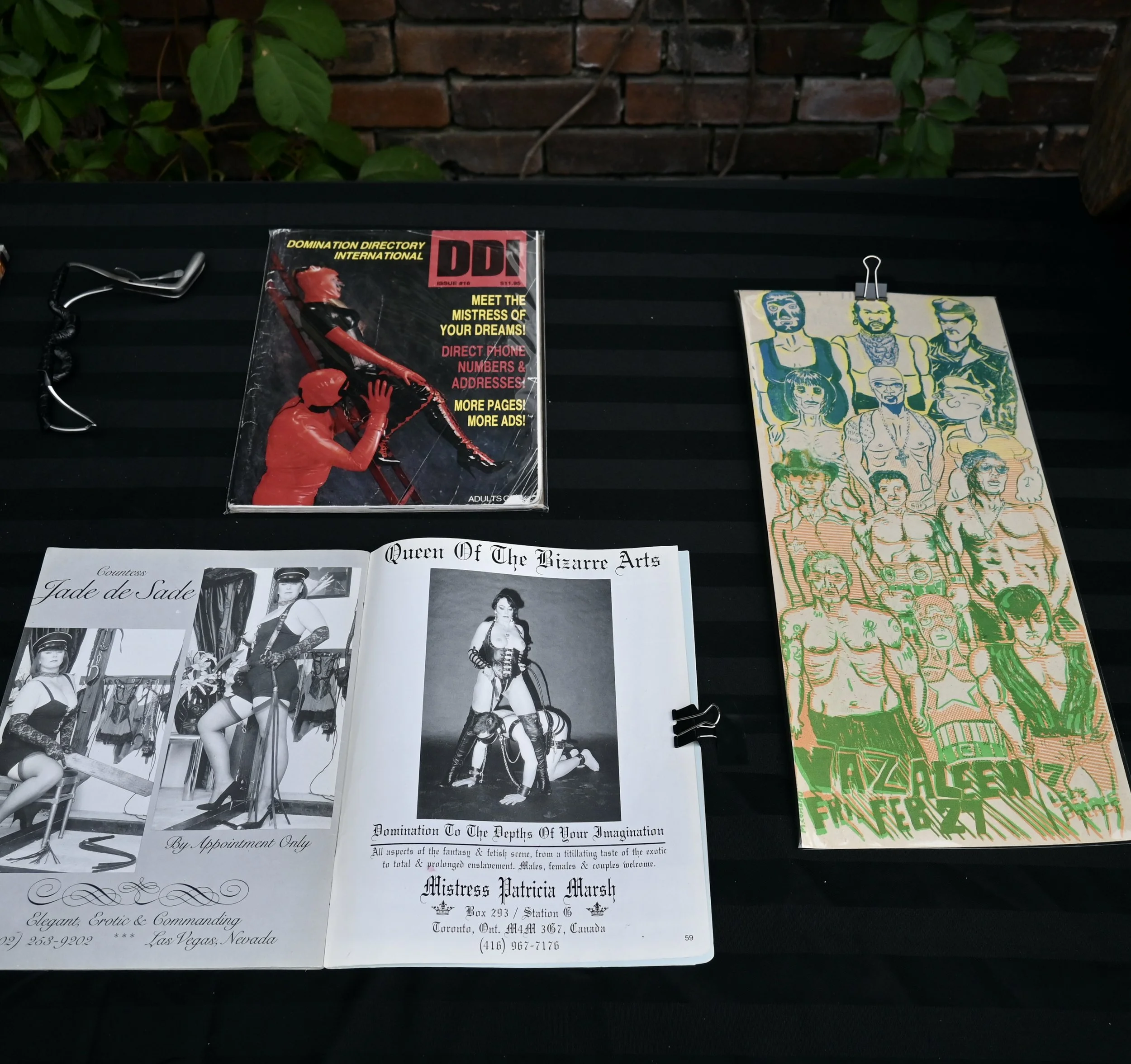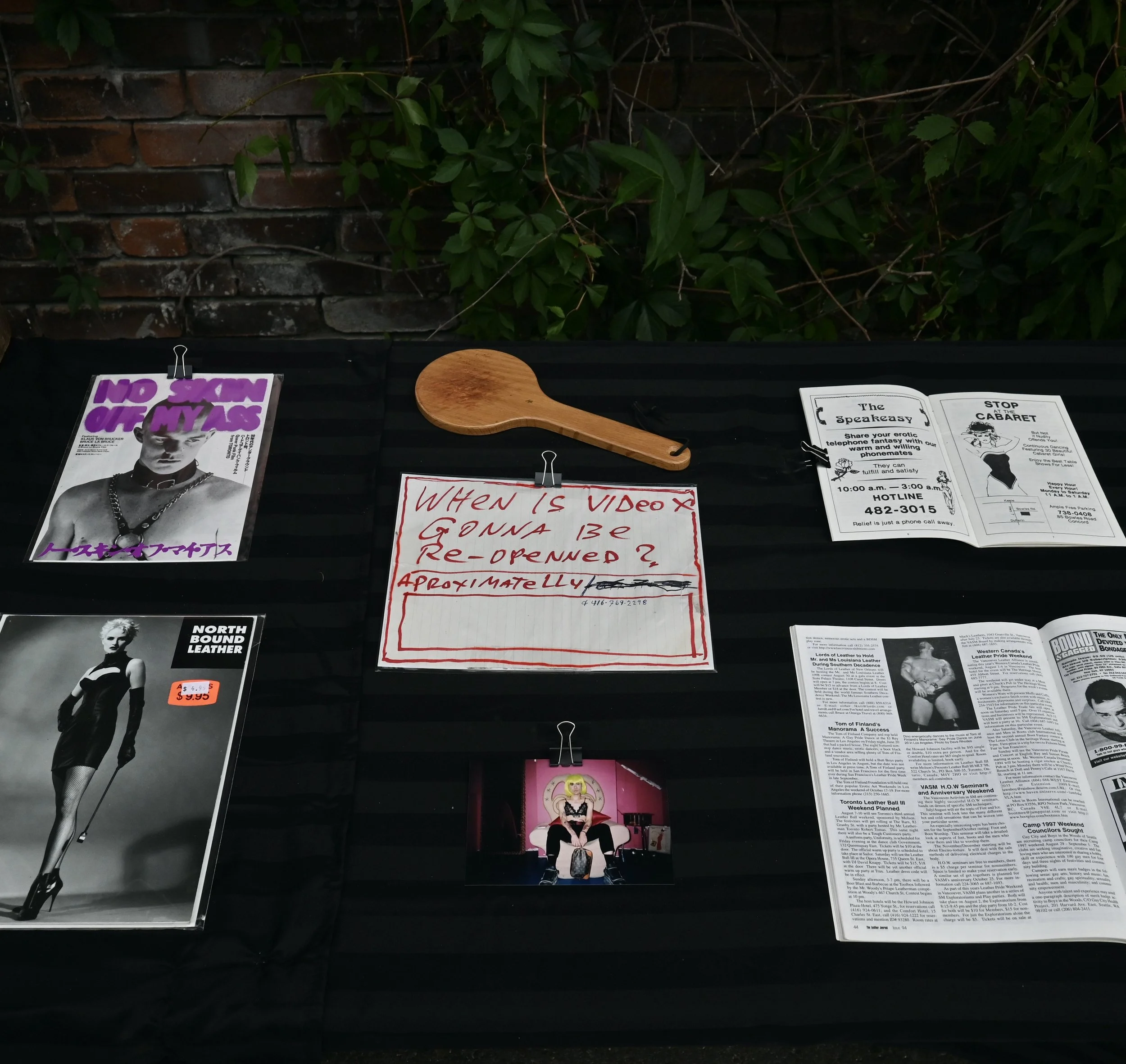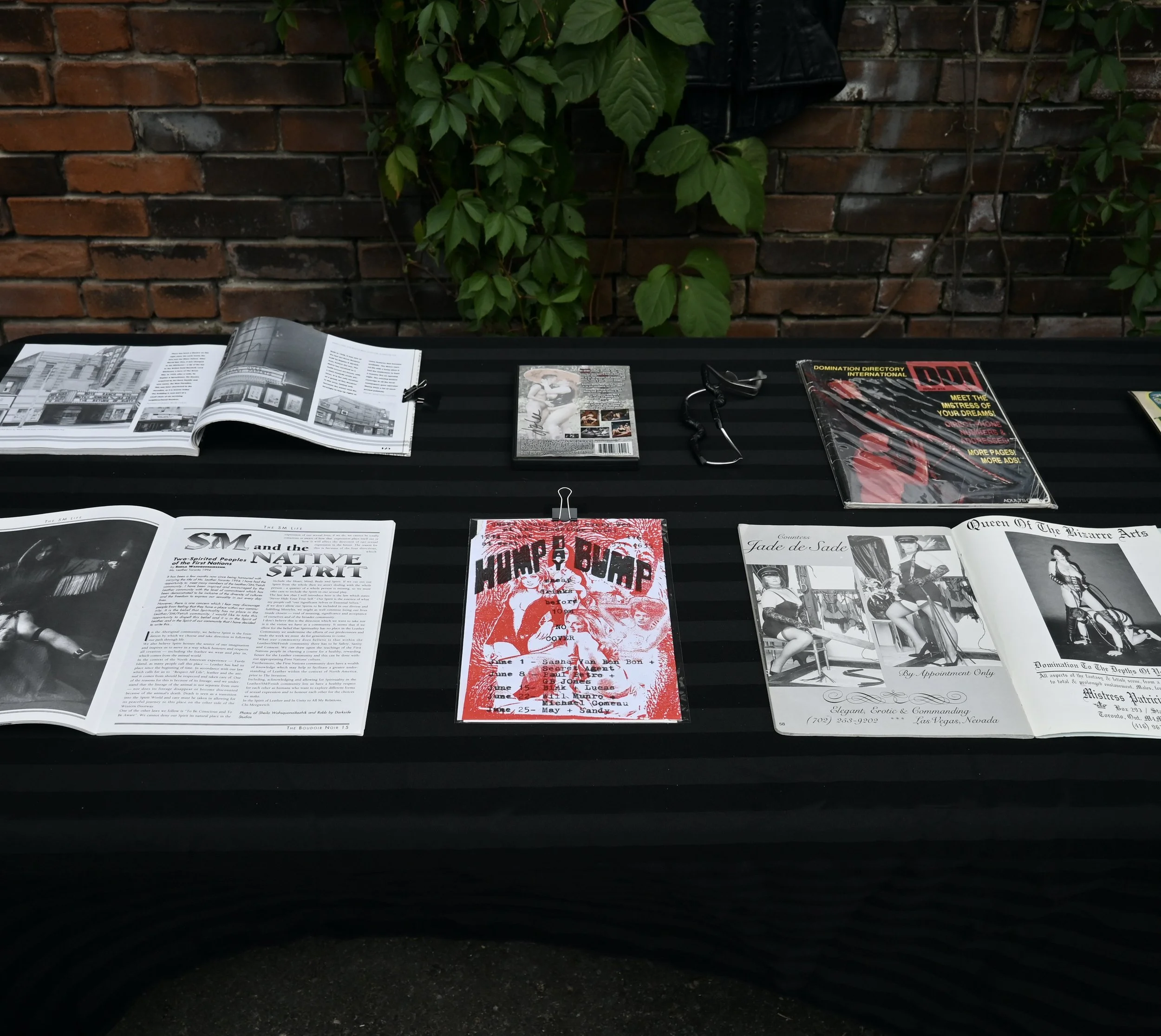Exotica: Archive Exhibition & Screening
July 24, 2025
Co-presented by Faith Alexandra Marie and Kiwi the Stripper
“I take a walk down Yonge Street,
where good times are bought and sold.”
Exotica offers a glimpse into the history of sex work in Toronto through archival material from the city’s porn theatres, strip clubs, and BDSM subcultures. Today, only three strip clubs and a small handful of sex shops and massage parlours remain on Yonge Street. But in the 1970s, it was the city’s erotic core. Between Bloor and Queen, Yonge bustled with body-rub parlours, porno theatres, adult video stores, and peep shows. Its flashing neon signs and crowded sidewalks made it Toronto’s busiest—and most controversial—thoroughfare.
By 1969, sex work had become one of Yonge Street’s primary industries, with the section between Gerrard and Dundas becoming known as “Sin Strip.” But this cultural ecosystem collapsed in 1977 after the abduction, rape, and murder of 12-year-old shoeshine boy Emanuel Jaques. His body was found on the rooftop of Charlie’s Angels, a massage parlour at Yonge and Dundas, and the ensuing public outrage triggered an aggressive crackdown. Over the next two months, police conducted dozens of raids and city officials issued hundreds of citations. By October, 36 of 40 adult businesses had shuttered.
Moral panic did not stop with Yonge Street, however. Jaques’s murder was sensationalized in the press with homophobic undertones. Drag performers were regularly harassed along Yonge during Halloween parades. Around the same time, a controversial article in The Body Politic titled “Men Loving Boys Loving Men” led to a raid on the magazine’s office. On February 5, 1981, Toronto police carried out coordinated raids on four downtown bathhouses, arresting 286 men in what was, at the time, the largest mass arrest in the city’s history. Though most were later acquitted, the scale and brutality of “Operation Soap”—which included verbal abuse, excessive force, and destruction of property—marked a breaking point, prompting public protests that demanded accountability and an end to police violence against queer communities. Bathhouses, strip clubs, and queer spaces continued to face police action throughout the 1980s and ’90s, with major raids in 1981, 1983, 1996, and 2000.
Sex work and BDSM remain marginalized in public discourse, often reduced to caricature. And yet many of us have visited strip clubs, attended sex parties, or know someone who works in the industry. This exhibition opens space for a more nuanced conversation—one that considers the layered, often erased histories of sex work and kink culture in Toronto, and the people who shaped them.


